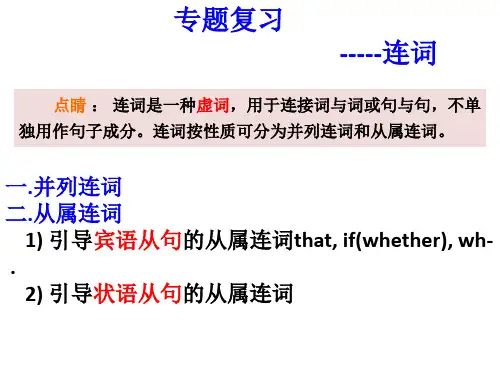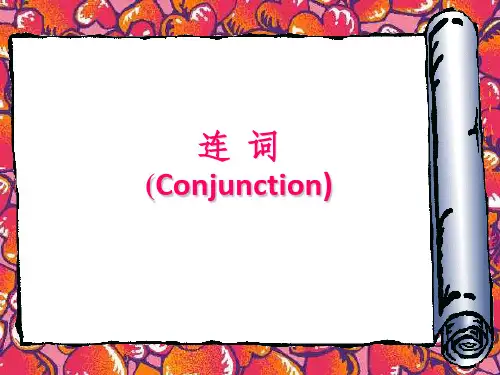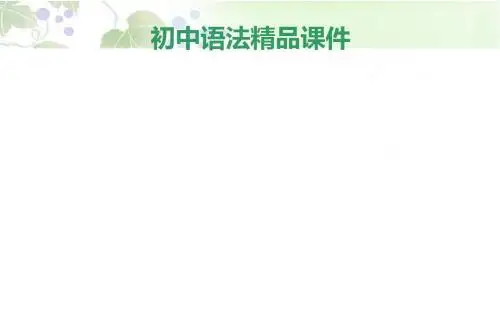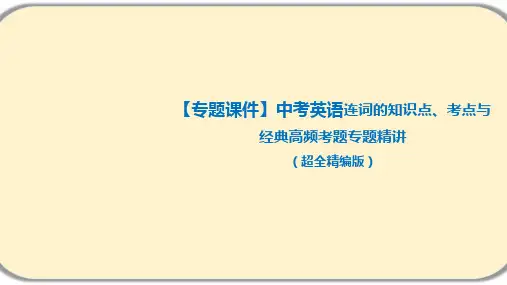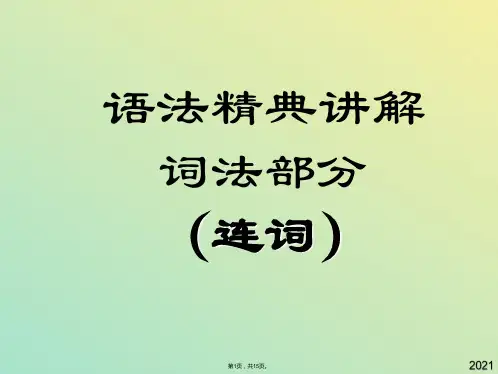A. and B. so C. as D. but
答案D. but与前面形成转折,符合语意.而表并列的and,结果的so,”
not 和but 后面的用词要遵循一致原则.
They were not the bones of an animal, but (the bones)of a human being.
I'll return the books to the library __ soon as possible.
”其注规意T律谓h由语esr动oe与词is采suc用nh的就o不近a同原ir词则o性.r决w定a. ter in the moon. sI thoaTpvpehegdeotrot e_h_ainvseewnasorefrsoatmirmay nfriedndn. o water on the moon. __ Jo在hn 否__ I定are中po并licem列en结. 构用or连接,但含有两个否定词的句子实际被看作是肯定结构,因此要用
2)so,therefore.
He hurt his leg, so he couldn't play in the game.
注意:
A. 两个并列连词不能连用,但therefore, then, yet.可以和并列连词连用. You can watch TV, and or you can go to bed.
语法精典讲解
词法部分 (连词)
第1页,共15页。
08连词的用法
【连词的用法】(讲解1)
连词主要分并列连词和从属连词两类,是种虚词不能独立担任句子成分而只起连 接词与词、短语与短语、句与句的作用.并列连词用来连接平行的词、词组和分句.如 :and, but, or, nor, so, therefore, yet, however, for, hence, as well as, both and,not only...but also, either or, neither nor, (and)then等等.

